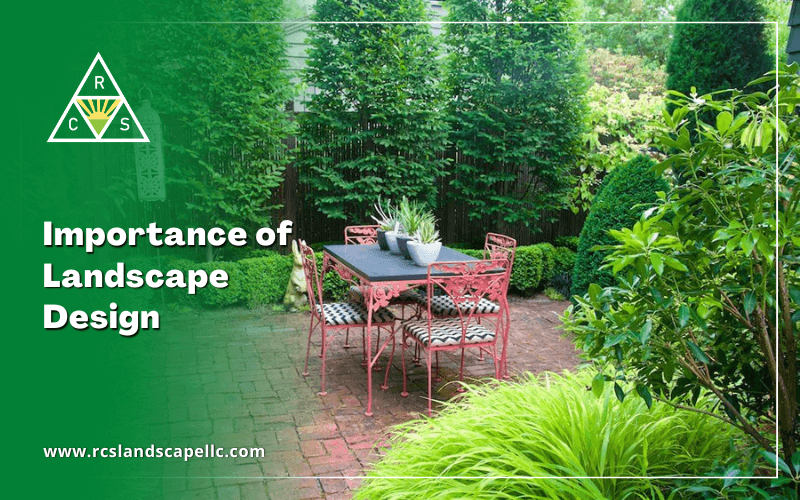Everything about Landscape Design
Wiki Article
The 9-Minute Rule for Landscape Design
Table of ContentsIndicators on Landscape Design You Should KnowSome Known Questions About Landscape Design.A Biased View of Landscape DesignThe Best Strategy To Use For Landscape DesignThe Ultimate Guide To Landscape Design
Formal style motif. Credit Score: Gail Hansen, UF/IFAS The lawn is an extension of the home where a variety of activities happen. A yard can generally be divided right into 3 areas: public (the front backyard), personal (the back lawn), and service (normally the side lawn). The place of task locations depends mainly on the sort of area, the size of area required, the kind of task, and the preferred proximity to various other activities and frameworks.The outdoors wall surface of your home usually works as the initial wall or beginning point of an exterior space. Incompatible uses should be divided, and associated activities, such as food preparation and eating, must be assembled to make the yard more effective and pleasurable. When making use of hardscape to produce spaces, utilize building and construction material comparable to that made use of in your home for connection from your house right into the yard.
Connected spaces. Debt: Gail Hansen, UF/IFAS Using similar hardscape features and repeating plants pulls the eye around the yard. Important factors in the process can be emphasized with plantings or attributes that draw interest and urge movement in a specific instructions. Relocating along the course takes a person from one area to the next and enables the customer to have a variety of experiences.
Landscape Design Things To Know Before You Get This

For psychological comfort plants are used as physical or suggested obstacles for personal privacy and security. Physical obstacles obstruct both the sight and accessibility to a room and consist of fences, wall surfaces and plant bushes. Indicated obstacles, generally low expanding plants, block access but not the view (Number 9). Other functions of plants consist of cleaning up the air, avoiding erosion and dirt loss, keeping dampness in the soil, and returning organic issue to the dirt.
Physical and indicated obstacles. Credit Scores: Gail Hansen, UF/IFAS For these reasons, the kinds of plants to be made use of (such as trees, bushes, or groundcovers) should be chosen in the onset of planning (Landscape Design). Plant types are selected for their practical capacities so that their future objective and required area can be thought about at the very same time

The 6-Minute Rule for Landscape Design
Each plant mass remains in front of, behind, or beside, one more mass. Figure 11. Straight plant layers. Credit Scores: Gail Hansen, UF/IFAS check my site Number 12. Vertical plant layers. Landscape Design. Debt: Gail Hansen, UF/IFAS Duplicating plants within a mass and duplicating masses with comparable plants links the yard together. The individual plant qualities have to be taken into consideration to efficiently layer and mass plants.All plant structures begin with the main structure plants, the large, mostly evergreen background plants-such as the trees and huge shrubs. These plants separate or enframe rooms, control the dimension of important link the area, and supply the starting point for picking the suitable qualities of the second layer, midground plants, for massing and infill.
Important factors in the garden need to be highlighted by the usage of one-of-a-kind plants, unique frameworks, or yard accessories. Marking limits or entryways to areas can be performed with gateways, arbors, and actions, or via using one-of-a-kind and vibrant plants. The kind and/or design motif of the garden will certainly frequently aid determine the important factors and exactly how they ought to be highlighted.
Various other vital locations in the yard are focal points, which is used to visually arrange a landscaped location. Various viewpoints or perspectives can expose different structures in the landscape that might call for a selection of focal factors.
The Of Landscape Design

Figure 13. Plant forms. Credit Rating: Gail Hansen, UF/IFAS After type, structure is the following dominant attribute of a plant; crude, medium and great structures can be used for comparison and focus in the landscape. Type and appearance both trump color in the garden for a lot of the year. During certain periods, color will be the most noticeable feature of the yard.
The pleasant fragrance of plants, the audio of wind in the trees, the noise and appearance of water, and the shades and structures of sculptures, pots and yard furniture all include in the experience of the yard. One detail that is often neglected is the result of light on the aesthetic appeals of the plants.

The smart Trick of Landscape Design That Nobody is Talking About
It is essential to know the ultimate fully grown size of plants so they can be placed in the right place and spaced properly when they are set up. Providing plants area to expand is a challenge since the usual fully grown dimension is generally based upon ideal growing conditions and the environmental conditions of a site might cause a plant to enlarge or stay smaller.
Report this wiki page